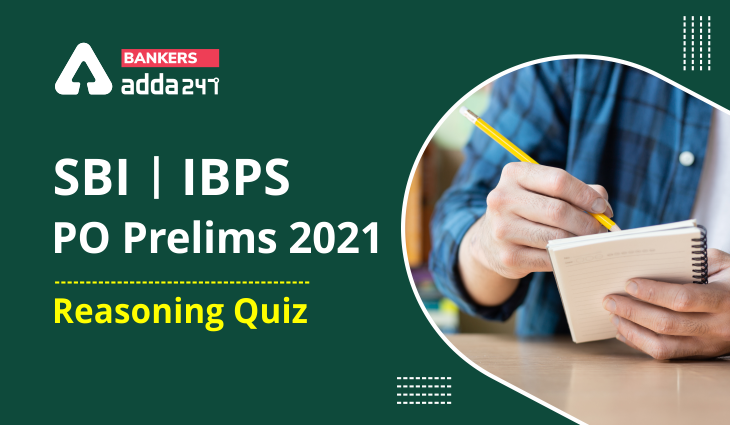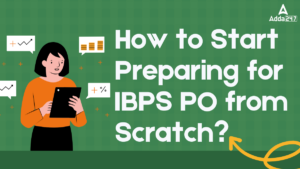Directions (1-5): Study the following arrangement carefully and answer the questions given below.
Z 5 R 1 @ 7 # 9 H I W 8 * 6 U J $ V D © 2 P 3 ¥ E K 4 F % 7 A M
Q1. Which of the following element is 3rd to the right of 15th element from the right end of this series?
(a) ©
(b) 2
(c) P
(d) $
(e) None of these
Q2. Four of the following five are alike in a certain way based on their position in the above arrangement and so form a group. Which is the one that does not belong to that group?
(a) R#@
(b) WU*
(c) D32
(d) E%K
(e)None of these
Q3. How many such vowels are there in the above arrangement each of which is immediately preceded by a number but not immediately followed by a consonant?
(a) None
(b) One
(c) Two
(d) Three
(e) More than three
Q4. How many such symbols are there in the above arrangement each of which is immediately followed by a number and immediately preceded by a consonant?
(a) None
(b) One
(c) Two
(d) Three
(e) More than three
Q5. How many such letters are there in the above arrangement each of which is immediately preceded by number and immediately followed by a symbol?
(a) None
(b) One
(c) Two
(d) Three
(e) More than three
Directions (6-10): Study the following arrangement carefully and answer the questions given below.
V 7 W $ Y 2 B E 6 # 9 M Q 3 % T @ R © U K 5 D ∞ H 8 G & Z N π 4 P
Q6. Which of the following is the seventh to the left of the fifteenth from the left end of the given arrangement?
(a) #
(b) E
(c) 2
(d) $
(e) None of these
Q7. How many such numbers are there in the given arrangement, each of which is immediately preceded by a consonant and immediately followed by a symbol?
(a) Three
(b) Two
(c) None
(d) One
(e) More than three
Q8. How many such symbols are there in the given arrangement, each of which is immediately followed and immediately preceded by a number?
(a) None
(b) One
(c) Two
(d) Three
(e) More than three
Q9. Which of the following is the seventh to the left of the tenth from the right end of the given arrangement?
(a) ©
(b) R
(c) @
(d) T
(e) None of these
Q10. What should come in the place of question mark (?) in the following series based on the above arrangement?
7$2 #M3 RU5
(a) ZN4
(b) 8&N
(c) 8GZ
(d) πZG
(e) None of these
Directions (11-15): Following questions are based on the five three-digit numbers given below.
792 813 541 462 692
Q11. If the positions of the second and the third digits of each of the numbers are interchanged then, how many even numbers will be formed?
(a) None
(b) One
(c) Four
(d) Three
(e) Two
Q12. If all the digits in each of the numbers are arranged in increasing order within the number then, which of the following number will become the second lowest in the new arrangement of numbers?
(a) 792
(b) 462
(c) 813
(d) 692
(e) None of these
Q13. If one is added to the second digit of each of the numbers and one is subtracted to the third digit of each number then, how many numbers thus formed will be divisible by three in new arrangement?
(a) Two
(b) One
(c) None
(d) Three
(e) Four
Q14. What will be the difference when Second digit of the 3rd lowest number is multiplied with the third digit of the highest number and third digit of the 2nd highest number is multiplied with the second digit of the lowest number?
(a) 22
(b) 27
(c) 13
(d)15
(e) None of these
Q15. If all the numbers are arranged in ascending order from left to right then, which of the following will be the sum of all the three digits of the number which is 2nd from the right in the new arrangement?
(a) 17
(b) 16
(c) 18
(d) 15
(e) None of these
Solutions
S1. Ans.(b)
S2. Ans.(d)
S3. Ans.(a)
S4. Ans.(c)
Sol. D © 2, F % 7
S5. Ans.(b)
Sol. 4 F %
S6. Ans.(b)
S7. Ans.(d)
Sol. Q3%
S8. Ans.(b)
Sol. 6#9
S9. Ans.(c)
S10. Ans.(b)
S11.Ans(e)
S12.Ans(e)
S13.Ans(d)
S14.Ans(d)
S15.Ans(c)
Click Here to Register for Bank Exams 2021 Preparation Material





 GA Capsule for SBI Clerk Mains 2025, Dow...
GA Capsule for SBI Clerk Mains 2025, Dow...
 The Hindu Review October 2022: Download ...
The Hindu Review October 2022: Download ...
 How to Start Preparing for IBPS PO from ...
How to Start Preparing for IBPS PO from ...





